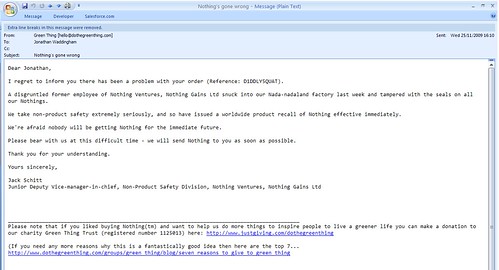 People complain about all the e-mail they receive and how much work it is for them to handle. And it is true, the number of e-mails being sent is definitely on the rise and adds an incredible amount of work to our already overflowing plates.
People complain about all the e-mail they receive and how much work it is for them to handle. And it is true, the number of e-mails being sent is definitely on the rise and adds an incredible amount of work to our already overflowing plates.
The reality is there are quite a number of things that you can do, personally, to keep your e-mail distraction to a minimum and greatly improve your productivity. After all, the less email you receive, the less you will have to handle. Here are a few tips:
Be very clear. By making sure that the content of your e-mails is very understandable, you can avoid people e-mailing you with questions. Taking a small amount of time on the front end to read through the e-mail you are about to send can go a long way in avoiding a return question.
Make the subject line detailed. By including detailed information in the subject lines, your recipients will be able to sort and respond with the right priority. The detailed subject line will also help YOU sort and handle responses.
Use only one subject per e-mail. The reality is that most people skim. If you put two requests in one e-mail, there is a strong likelihood that only one of the requests will be responded to. It is more effective to send two e-mails with different subjects than to incorporate two subjects into one e-mail. This practice is also helpful for people who want to file the messages.
Copy only the people who need to read the message. For every extraneous person copied on an e-mail, you have potential to receive a response. Therefore, both parties lose productive time—they waste minutes in responding to you, and you waste time with their reply.
Send less e-mail. While this may seem a no-brainer, e-mail begets e-mail. Sometimes it is better and easier to pick up the phone, or to just not respond.
Have a detailed signature line. By having all of your contact information in the signature line of every e-mail you send, you enable efficient communication. If someone needs to call you, fax you, or mail you something, they will have the information they need and not bother you with an email requesting this contact material.
Use voting buttons. If you need to ask several people a yes or no question, use the voting buttons that are in your e-mail program. The e-mail program summarizes the responses, and reduces the amount of time you need to spend coordinating the information.
Make it a group standard to use the electronic calendar. When everyone places all of their appointments in the electronic calendar, they make it very easy for people to schedule meetings. This avoids e-mails going back and forth with questions such as, “are you available next Wednesday at 2:00 p.m.?”
Avoid controversial or argumentative e-mailing. When you engage in an emotional discussion via e-mail, the e-mails will fly. And most likely, they get heated. Emotional issues should never be handled by e-mail; a phone call or person to person handling of the situation is best—for time reasons, as well as office dynamics.
Create a company/group blog or chat room. When you are going to requesting feedback and opinions, a blog or a chat room is much more effective at showing each person’s response all in one place than trying to coordinate opinion responses from multiple emails.
While each one of these may save only a small amount of time and reduce your e-mail only by a few, collectively, they have potential to vastly improve your control over the number of e-mails you receive. E-mail is here to stay; the sooner you develop productive habits regarding its use, the more time you will have for what is really important in your life.
These tips were excerpted from Marsha Egan’s eBook Reclaim Your Workplace Email Productivity: Add BIG BUCKS to Your Bottom Line. For more information, please visit www.EganEmailSolutions.com.


